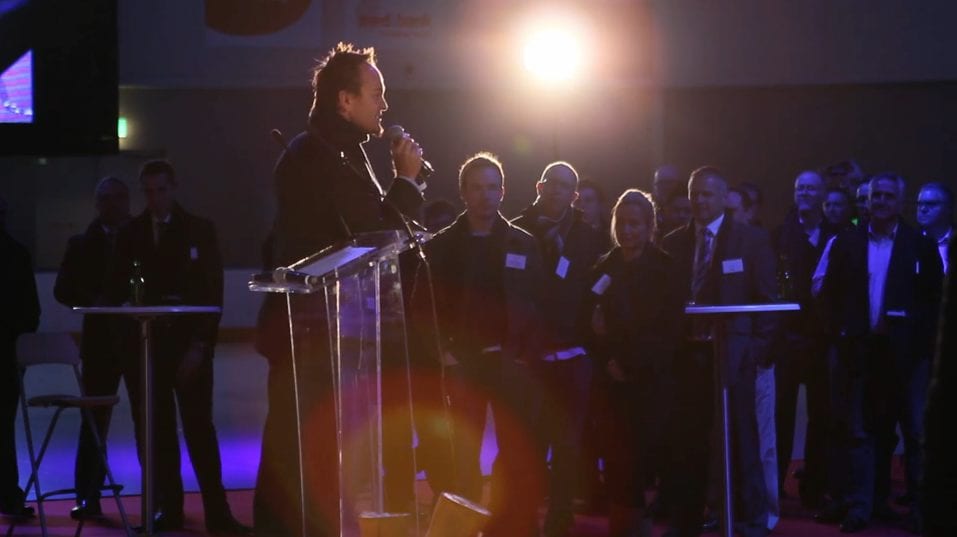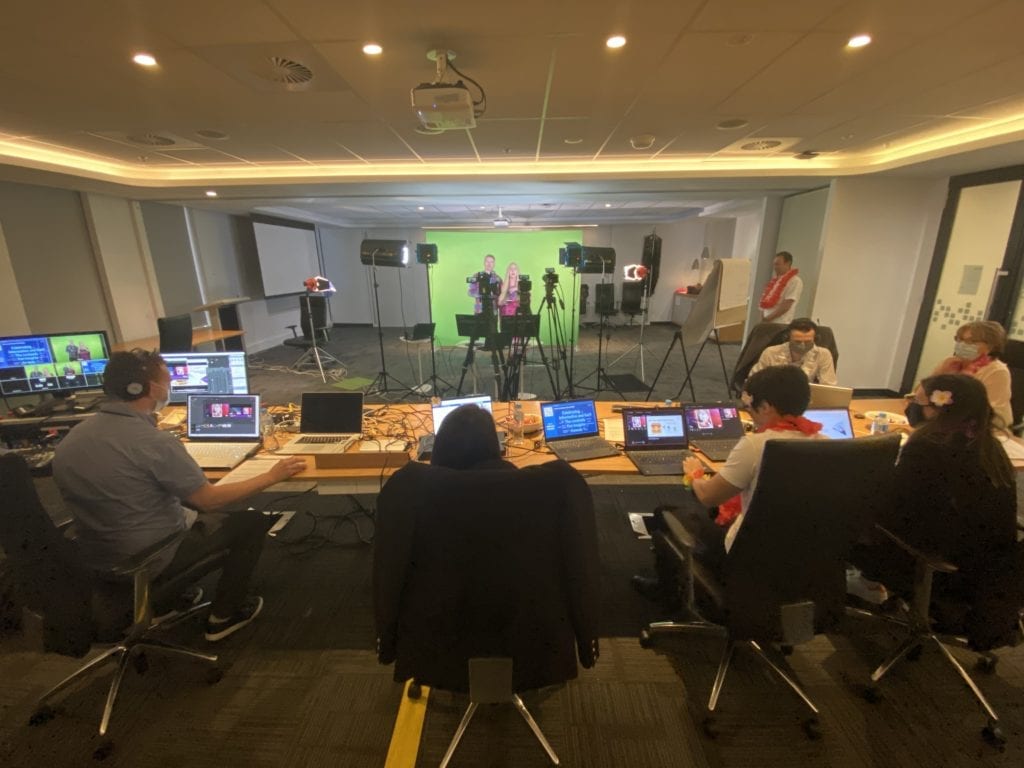Filming a live event is always a daunting task. There are so many elements to bring together, and no opportunity for a second take. But, with the right planning, an event video can be a great calling card, both for your client and for you as their video production company.
Here are some essential tips to take some of the stress out of the process and make sure your event video will be alright on the night.
1. Understand your client’s vision
Before you can start planning the video, you need to have a detailed consultation with your client. And since you put in all the work to land this client, you’ll want to make a good impression.
What is the nature of the event, and what are they hoping the video will achieve? No two clients’ visions are ever the same.
For example, if it’s a training event, they might want the video to be available afterwards to their employees so they can take a refresher online anytime they feel they need it.
If it’s a conference with well-known speakers, the client might want the keynote speeches captured so those who could not attend in person can get the information they need later.
Alternatively, the event might be a prestigious product launch or glitzy party, so the purpose of the video will be to highlight the glamour of the event and gain maximum exposure for the brand.
You should also ask them about their social media plans around the event. A few short clips from the video can go a long way when it comes to building excitement around a brand, product, or future event.
Once you understand your client’s purpose and vision, you can start getting creative and putting together your video plan.
2. Visit the venue in advance
No movie would start filming without checking out all the locations first, and event video production should be no different. You need to know the venue inside out before the big day.
How will it be laid out? Which rooms will be used? You can only work out the best camera angles and identify any potential video or audio challenges when you know where people will be standing or sitting.
Knowing these things in advance will save you a lot of time and stress on the day. It’ll also give you a chance to plan out a shot list so you aren’t trying to find good spots for your camera at the last minute.
What lighting will be used? If the lights will be low, you need to make sure your cameras can still record the best quality footage. (Most clients won’t want their event guests blinded by bright lighting equipment if you can help it.) You can work with the venue to make sure the lighting will be adequate without spoiling the ambience of the event.

You also need to factor in safety as a main priority. Where can you place your equipment so no walkways will be blocked? Can all wires be safely taped down? Knowing where the ridges are on the floor or if there are any loose floorboards or uneven stairs could save you and others from having a nasty accident at the event itself.
3. Get to know the people you'll be working with
Visiting the venue in advance is a great way to get to know the venue manager and the people in charge of the event. You need to build a great rapport with them so you can all work together smoothly — you might need to rely on them to solve some of the logistical challenges that are bound to arise.
You should also meet with the Audio Visual team before the event so you can discuss technical details like lighting and staging.
What microphones will they use? Where will they be placed? Will you need to use your own mics for each camera? Will you be recording the audio for your video through the AV desk? Will there be any screens, projectors, or video footage used at the event?
By working out these details in advance, you can reduce the likelihood of technical difficulties and ensure that you can get the best quality video and audio.
Striking up a good relationship with all the people you need to work with is extremely important, as it will make them more cooperative with you and your team. You all need to work together as a harmonious whole if you want to get the best from your event video.
4. Make sure everyone is prepped
This one should go without saying, but it’s essential that everyone on your team understands their responsibilities before the shoot. There are no second chances to get a live event right, so everything has to run like clockwork on the day.
You have to make a detailed plan that lists exactly who is doing what and when, and you need complete buy-in from every single person on your team. If you have multiple camera operators, (which is normal at an event) then you need to have a consistent visual style so the footage doesn’t look choppy when it’s cut together.
Your plan should include an event schedule, particularly if there are several sessions that all need to be recorded. Will these be taking place in different rooms? Make sure you have time to move everything smoothly from one room to another so you don’t miss any crucial moments.
5. Know your equipment
You’re a video professional, so you’re used to the equipment you’re working with, but you need to prepare for every eventuality. Are all your cables and adapters in good working order? It’s essential to pack spares of everything just in case something goes wrong — and it probably will.
If you’re getting your audio from the desk at the venue, you need to check the levels in advance and be prepared for potential difficulties with wireless mics. And if you’re capturing it yourself, you’ll need to set yourself up to get great audio in any situation.
You should also work out exactly how any footage will be displayed on screens at the event, if this is required.
If possible, have a full tech run-through before the event itself to make sure everything is working properly and everyone is comfortable with what they’re supposed to be doing.
Basically: Check, double-check, and triple-check. Plan for the worst, because that’s the only way you can hope for the best.
6. Get there early
You and your team need to arrive at the venue well in advance of the event. This way, you’ll have the opportunity to do last-minute checks, consult one last time with the AV team, and make sure your gear is set up correctly. You won’t be able to relax into the process and do your best creative work if you’re feeling rushed and stressed.

Also, make sure everyone on your team is dressed appropriately and that they are all polite to the venue staff, clients, and guests. This is an important calling card for your business that could result in more work at the venue, so you don’t want someone’s sweatpants or attitude to ruin it.
7. Take two of everything
Two versions of the audio; two versions of the video. This is what you need to be recording if you want to avoid catastrophic technical hitches. And always back everything up straight away as soon as you get back to the edit suite!
You need to minimize the possibility of losing a single minute, because it could make all the difference to the final video. If something did go wrong with a camera or the AV desk, you can have peace of mind that the glitch won’t be noticed in the end product.
8. Get the mood right in the edit
Even though you have planned the entire video down to the last second, it’s always worth taking a second look at your B-roll once you’re in the edit suite. A lot of the time, this unplanned footage can add context and texture to your video, helping to convey the atmosphere of the event.
It’s always the little moments that make an event special, not just the big-name speakers or the product being launched. Including B-roll footage can make all the difference, and it can also be used to transition between scenes to provide a smoother experience for the viewer.
The right music can also play a huge part in setting the scene and conveying the ambience of the event. It’s well worth checking out reputable stock music licensing companies such as Soundstripe to find the perfect soundtrack for your video. This will add an all-important finishing touch, making your video look and feel much more polished and high-end.
9. Get the video out quickly
Your client will want the video to have an immediate impact, whether on social channels, a website, or with people who couldn’t attend the event. This is why you need to get started on the cut as soon as the event is over.
Ideally, you want it complete within a couple of days so the event is still fresh in people’s minds.
And finally, don’t forget to enjoy the process. Yes, it’s a lot of pressure. Yes, there are multiple things that could go wrong. And yes, you’re working against a ticking clock. But those factors can create a real buzz of adrenaline that spurs you on, fuels your creative vision, and makes you excited for the next job.
About the author:
Ryan Spanger is the Managing Director of Dream Engine: a video production company based in Melbourne, Australia. The company has produced many event videos for medium to large corporations, government departments, and universities.

